Michael Hiltzik: No one understands Trump's thinking on tariffs. Here are the top guesses
Published in Business News
For a brief, shining moment Wednesday, it looked as though some semblance of sanity had crept into Donald Trump's trade war.
Trump abruptly reversed course on the "reciprocal" tariffs he had begun to impose on scores of America's leading trading partners and other countries. He dictated a 90-day pause in those tariffs, while simultaneously raising tariffs on Chinese goods to 125% — effectively shutting off the flow in bilateral trade.
The stock market, which had been in a historic swoon since Trump announced the "reciprocal" tariffs on April 2, turned on a dime, registering one of its sharpest one-day gains in history.
The market resumed its swoon Thursday, however. In part that reflected investors' recognition that even after Trump blinked, the tariff policy he was following was still economically senseless. He left in place 10% worldwide tariffs and 25% tariffs on autos and auto parts; and the steeper tariffs on China sharpen the trade war to one that experts say the U.S. can't win.
Trump's reversal also underscored doubts about the economic rationale for his tariff war, which has been widely derided by economists and trade experts.
And it raised new doubts about whether he even understands much about international trade — and about whether anyone close to him, much less outside observers, understand anything about his thinking.
So here is a look at the leading theories about Trump's abrupt climb-down Wednesday, followed by a look at why, no matter the explanation for his trade war, it doesn't make sense for America.
Keep in mind that there's no hard evidence for any of these theories, although they're all consistent with Trump's recent tariff policymaking. I asked the White House to comment on all these scenarios but didn't get a response.
—The potential for stock manipulation: Back on March 13, I wrote a column dashing cold water on the idea that Trump and White House insiders were manipulating the stock market through his on-and-off announcements about tariffs and the economy.
I hereby withdraw that column.
The truth is, no one knows anything about any activity of the time, but people are pointing out the opportunity for sharp practice embodied in the whipsawing tariff policies emitting from the White House.
That possibility has not gone unnoticed. Sen. Adam Schiff, D-California, tweeted late in the trading day Wednesday that Trump's "constant gyrations in policy provide dangerous opportunities for insider trading. Who in the administration knew about Trump's latest tariff flip-flop ahead of time? Did anyone buy or sell stocks, and profit at the public's expense?"
Richard Painter, who served as chief ethics lawyer for former President George W. Bush, raised the same prospect.
"This is a scenario that could expose the president to accusations that he engaged in market manipulation," Painter told NBC News.
The timing of Trump's postings Wednesday on Truth Social was indeed awfully ... curious. At 9:37 a.m. Eastern time, he posted: "THIS IS A GREAT TIME TO BUY!!!" Just four hours later, at 1:18 p.m. Eastern, came the announcement, also on Truth Social, that he was backing away from his supposedly "reciprocal" tariffs.
There's no evidence that he or anyone else in his circle traded ahead of his tariff announcement — no evidence that anyone with his or her hands on a "buy" button had advance knowledge of Trump's plans.
The concern is that if someone like Trump were (hypothetically) intent on fostering trading ahead of the announcement, this would be a way to do it — cluing in one's followers to a bullish development and giving them four hours to set up profit-making trades. That's exactly the issue raised by Schiff and Painter.
What is known is that derivatives linked to the Standard & Poor's 500 and Nasdaq indices leaped ahead starting at about 1 p.m., minutes before the announcement. In superficial terms alone, that implies that someone might have been front-running the announcement.
It's proper to note that the STOCK Act of 2012 made it illegal for members and employees of all three government branches — including the president — to trade on nonpublic information gained through their jobs. Top executive branch officers and employees are required to disclose investment transactions worth more than $1,000 within six weeks.
That means we may eventually know who, if anyone, traded on Wednesday. However, connecting their trades to knowledge of the pending announcement would be tricky. There are several plausible explanations for a stock buy on Wednesday, including the argument that the market had largely discounted the cost of the tariffs and was ready to start recovering.
—The stock market freakout: It's possible that Trump's economic advisers, including Treasury Secretary Scott Bessent, and his political counselors finally got through to him that the market's historically rapid plunge since April 2 would not be good for the economy or Republicans' fortunes in the 2026 midterms.
The drumbeat of criticism had spread to business leaders, including some of Trump's most assiduous supporters in the billionaire and millionaire class. Trump had bragged in the past that his policies spurred the investment market higher — and predicted during the campaign that the election of Kamala Harris would bring about a market crash, so these concerns may finally have registered.
—The bond market freakout: More worrisome to financial observers was weird, counterintuitive activity in the treasury bond market. Traditionally, bond and stock prices move in opposite directions: When stocks are falling, investors flock to T-bonds, which are widely judged to be the safest securities in the world — a "flight to quality," in Wall Street parlance. That drives bond prices higher (and interest rates lower).
That wasn't happening. Bond yields were rising, driving prices lower. The activity implied that treasuries may have lost their glow, or that the stock market collapse had produced untenable losses among Wall Street traders.
Either explanation would be, as George Orwell might have put it, doubleplusungood.
Former Treasury Secretary Lawrence Summers was among many who sounded the alarm, tweeting before the markets opened Wednesday that "developments in the last 24 hours suggest we may be headed for serious financial crisis wholly induced by US government tariff policy. ... This highly unusual pattern suggests a generalized aversion to US assets in global financial markets ... This could set off all kinds of vicious spirals, given government debts and deficits and dependence on foreign purchasers."
—Trump the mastermind: Trump's spokespersons and most ardent sycophants are claiming that his on-and-off tariff policies were always part of the plan.
"This was his strategy all along," Bessent asserted. "President Trump created maximum negotiating leverage for himself."
Commented White House Press Secretary Karoline Leavitt: "Many of you in the media clearly missed 'The Art of the Deal.' You clearly failed to see what President Trump is doing here."
She was echoed by billionaire hedge fund operator Bill Ackman, who on Sunday had been publicly panicking about the prospects for "a self-induced, economic nuclear winter" and said he'd be hammering on that theme until Trump changed his mind. Wednesday after the announcement, Ackman tweeted: "This was brilliantly executed by @realDonaldTrump. Textbook, Art of the Deal."
Yet attributing Trump's actions to his supposed dealmaking genius presupposes that he got something in return for backing down. Nothing of the sort is visible.
Although Bessent claims that countries on the reciprocal list have been battering at the White House doors to negotiate, no deals had surfaced before Trump's announcement.
Indeed, the stock market's resumed swoon Thursday suggests that Trump's credibility as a tariff negotiator is shot. The problem with portraying a negotiator as crazy like a fox is that sometimes the same behavior looks like the actions of someone who is crazy like a crazy person.
The truth is that notwithstanding Trump's reversal, his tariff policies have still left the international trade system in chaos. Even worse, his policies will be most damaging to the U.S.
That's the view of Adam S. Posen, an expert on international trade who is president of the Peterson Institute for International Economics.
"The U.S. economy will suffer enormously in a large-scale trade war with China," Posen wrote Wednesday. "The Trump administration may think it's acting tough, but it's in fact putting the U.S. economy at the mercy of Chinese escalation."
That's because in trade terms, the U.S. needs China more than China needs the U.S. The U.S. is making a fundamental error in its depiction of the relative strength of the two countries' trade imbalance.
The administration thinks it's dealing from a position of strength: "What do we lose by the Chinese raising tariffs on us?" Bessent asked on CNBC. "We export one-fifth to them of what they export to us, so that is a losing hand for them."
The truth is exactly the reverse, Posen wrote, and not merely because the U.S. actually exports to China more like two-fifths of what China exports to the U.S. "The United States gets vital goods from China that cannot be replaced any time soon or made at home at anything less than prohibitive cost."
In an escalating trade war, China will lose sales — that is, money. But China, unlike the U.S., has a surplus of savings, meaning it can survive the loss of trade revenues indefinitely. By shutting down imports from China, Posen observes, "the United States will face shortages of critical inputs ranging from basic ingredients of most pharmaceuticals to inexpensive semiconductors used in cars and home appliances to critical minerals for industrial processes including weapons production."
The harvest is stagflation — the combination of higher prices and a shrinking economy — last seen in the 1970s and during the pandemic. The only "give" in the U.S. economy to address that is higher unemployment.
That's the path Trump is mapping out for us.
©2025 Los Angeles Times. Visit at latimes.com. Distributed by Tribune Content Agency, LLC.



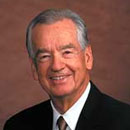
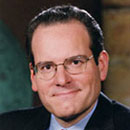
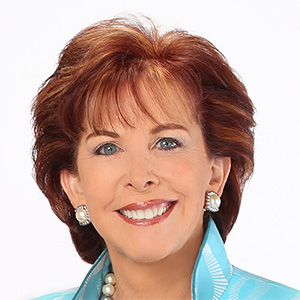
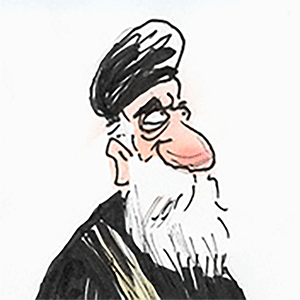



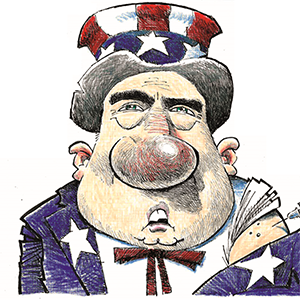

Comments